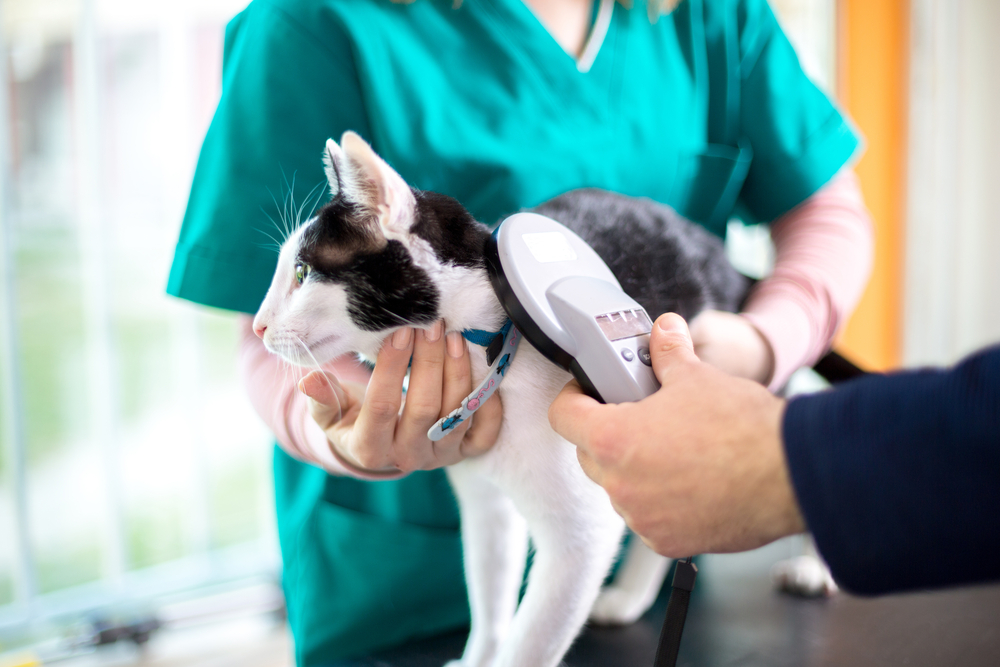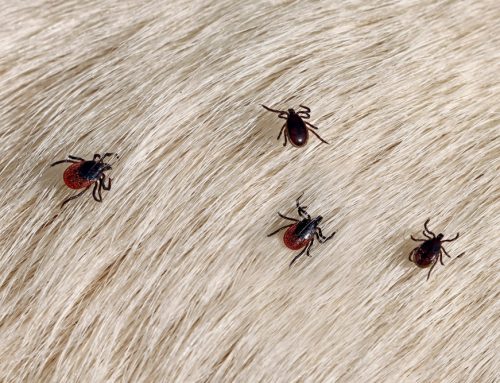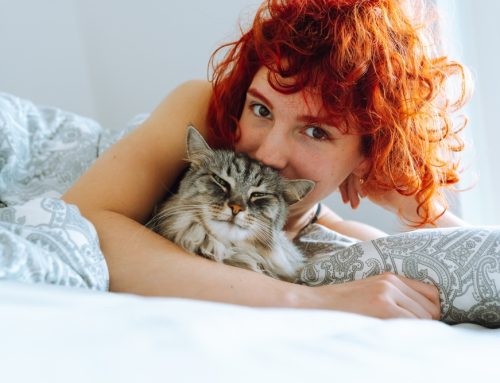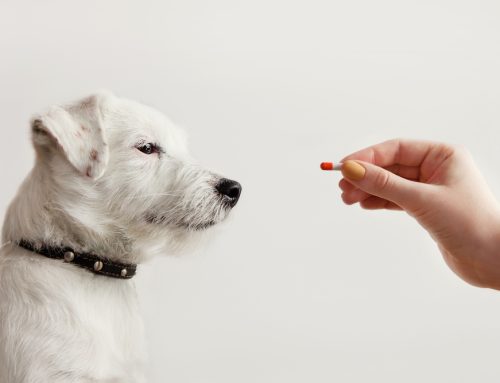As summer settles in, you’re likely looking forward to the highlight of the season—July Fourth. This year’s celebration will probably look a little different than years past. Instead of large picnics, followed by a loud fireworks display, most people plan to stay home with a few family members to enjoy a low-key Independence Day. Many fireworks displays are cancelled, but that won’t stop your neighbors from lighting their own backyard displays. In fact, neighborhood fireworks are expected to be at an all-time high this year. Although you may enjoy the light flashes and wall-shaking booms, your noise-phobic pet may feel differently.
One in three dogs suffers from noise aversion, which is an extreme fear of loud sounds. For these pets, July Fourth fireworks cause severe stress and anxiety, and may cause pets to panic, injure themselves, or run away. If your pet dives under the coffee table when you vacuum, or hides in your closet during thunderstorms, they likely have some degree of noise aversion. Follow these five tips to help your pet have a fear-free July Fourth.
#1: Create a safe haven for your pet
Pets with a noise phobia often seek refuge under a bed, in a closet, or in the bathtub, when they feel anxious. If your pet dislikes loud noises, create a sanctuary where they can hide out when fireworks, or storms, light up the sky. Ideally, choose an interior room without windows, or cover the windows with darkening curtains or shades. Outfit one corner with a cozy bed and a few favorite toys. Turn on the television, play quiet music, or use a white noise machine to drown out the scary sounds, and give your pet a frozen Kong filled with peanut butter or canned food as a distraction. Your pet may love their new den so much that they go there themselves when they start to feel anxious.
#2: Give your pet a squeeze
Swaddling is a tried-and-true method of alleviating stress and anxiety in babies, so why not try it with your dog? A ThunderShirt applies gentle, constant pressure to your pet’s torso, similar to wrapping your arms around them. Thundershirts can help alleviate anxiety caused by many different triggers, but they are most successful in helping calm pets who are fearful of loud noises. Simply place the thundershirt on your dog before fireworks begin, or at the first sign of anxiety, and leave it on until the threat passes.
#3: Desensitize your pet to loud noises
You know that fireworks are all bang and no bite, so teach your pooch that no real threat exists by pairing the scary sounds with an enjoyable reward. To desensitize your pet, quietly play fireworks sounds while you play with your pet, or give them special, high-value treats. If your pet seems comfortable, slowly increase the volume. But, if your pet becomes anxious at any point, decrease the volume, and proceed more slowly. The desensitization process takes time, but can reap long-term rewards if your pet overcomes their fears.
#4: Consult our veterinary team for pharmaceutical help
Although we prefer that you try natural methods before medication, some pets become so fearful during the holiday, or during storms, that only a prescription will prevent them from panicking and injuring themselves. If your pet suffers from extreme anxiety, and other methods don’t provide relief, they may need pharmaceutical help. The Best Friends Veterinary Care team will examine your pet and discuss the best options to help your furry friend. Although sedatives can get the job done, calming supplements, foods, or treats can be equally effective.
#5: Check your pet’s microchip

Although having a working microchip will not alleviate your pet’s fears, it can ease your anxiety about losing your pet during the holiday weekend chaos. July fifth is the busiest day of the year for most dog shelters, because many dogs bolt in fear during the fireworks celebrations. If your pet does not have a microchip, we can place one during a routine office visit, without sedation or anesthesia. The size of a rice grain, a microchip is programmed with a unique number that is linked to your contact information. A microchip placed under your pet’s skin will remain active for their lifetime, so should your pet become lost, a shelter worker can scan their microchip, and you can be contacted for a happy reunion. If your pet does have a microchip, stop by to let us scan it before the holiday, and ensure it is working correctly. If your contact information has recently changed, contact the national database to update your file.
Make this July Fourth different for a good reason—make it your furry friend’s first fear-free Independence Day. Give us a call if you need help battling your pet’s fears, so they can enjoy the holiday.








Leave A Comment